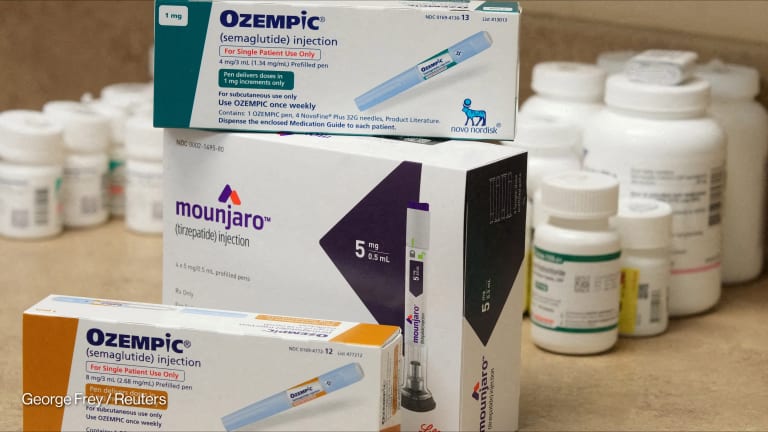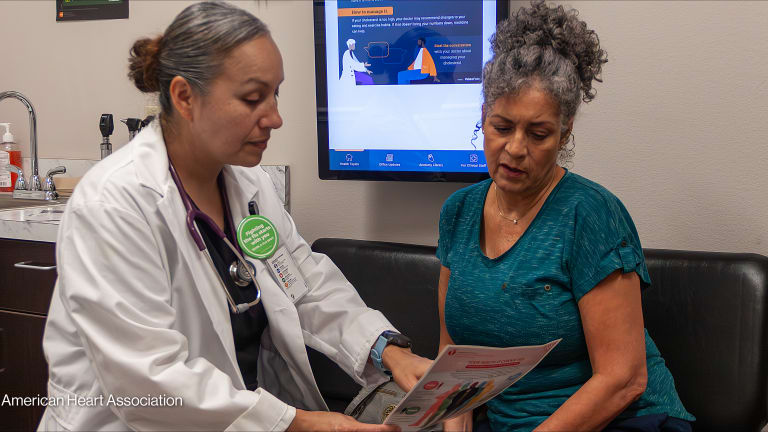
By 2030 diseases associated with wealth will kill more people in sub-Saharan Africa than diseases associated with poverty. The sharp increase in diseases linked to lifestyle, or noncommunicable diseases, is putting pressure on health systems already buckling under the burden of infectious diseases, and threatening recent development progress, which is why reducing premature mortality from NCDs by one-third through prevention and treatment and promoting mental health and well-being is a key target of the Sustainable Development Goals.
While governments across the region are having some success in addressing acute and infectious diseases, a more somber picture emerges in relation to NCDs and reaching the 2030 target. Between 2010 and 2015, deaths from NCDs as a proportion of all mortalities rose from 29.4 percent to 33.5 percent, and now claim 3.1 million lives a year. According to the World Health Organization, Africa is experiencing the largest increase in NCD mortalities globally. Yet many African countries are not prioritizing the issue, choosing instead to tackle diseases such as cholera, malaria, tuberculosis, and HIV/AIDS.
NCDs require a different approach than that developed for communicable diseases.
“NCDs require a whole-of-government approach: it’s not just about health, it’s about roads, livelihoods, architecture, education, [and] urban planning,” explained Dr. Joseph Kibachio, head of Kenya’s division of NCDs in the Ministry of Health, adding that Africa is a continent in transition.
“With globalization, our customs and traditions are changing,” he said. “We are eating more refined foods, smoking and drinking alcohol more, and living in cities where we get less exercise and are exposed to pollution from cars and transport.”
“There are so many priorities in most African countries, how can under-resourced ministries navigate doing everything for everyone? They can’t.”
— Dr. Jolene Skordis, director, University College London’s Centre for Global Health EconomicsSystem overload
This changing lifestyle is exerting both health and economic costs on the poorest countries, with families and health systems in sub-Saharan Africa often under-resourced, overstretched, and not equipped to deal with NCDs. These health challenges rely mainly on time-bound interventions — starting with early diagnostics and treatment — and involve advanced diagnostics and drugs, intensive disability management, and prolonged, often lifelong, patient care.
Africa’s health resource deficit can be seen in its staffing levels. The continent has just 1.3 percent of the world's health workers who deal with 25 percent of the global burden of disease. Priorities therefore focus on immediate need rather than on longer term health challenges. Weak capacity within the health system and a lack of a coherent policy responses to NCDs lead to fragmented and vertical interventions that ignore many pressing health issues. As a result, over two-thirds of people with diabetes remain undiagnosed, and only access health care when their conditions have become acute, placing an additional burden on health systems.
Solutions for change
NCDs cluster into four categories: Cardiovascular diseases — such as heart attacks and strokes — cancers, chronic respiratory diseases, and diabetes. These diseases share many common risk factors such as smoking, excessive alcohol consumption, physical inactivity, exposure to pollutants, and an unhealthy diet.
Addressing and reversing the increasing prevalence of NCDs will require concerted government action. Yet solutions are not easy to come by, according to Dr. Jolene Skordis, director of University College London’s Centre for Global Health Economics and reader in health and development economics.
“When it came to infectious diseases, most high-income countries had a plan, and this is what they exported to low-income countries to deal with the issue,” she said. “When it comes to NCDs, high-income countries themselves lack a coherent response. Resource constrained countries hit by the double burden of diseases are really struggling.”
Early intervention and partnerships across the public and private sector could significantly reduce this economic burden.
Partnering to provide care and treatment to the poorest
Companies such as Novo Nordisk, the largest insulin provider in the world, are working with governments to respond to the NCD crisis, especially among the poorest segments of society. In 2010, the company launched an innovative partnership with Kenya’s Ministry of Health, local county governments, faith-based organizations, patient groups, and other private sector partners to tackle diabetes. The Base of the Pyramid program aims to increase awareness of diabetes, ensure early diagnosis through screening, increase access to quality care, and provide a stable and affordable insulin supply.
Soraya Ramoul, director of the global access to care program at Novo Nordisk, explained that the program has been able to ensure a steady supply of insulin at an affordable price, simultaneously stabilizing the market and ensuring all outlets selling insulin in the surrounding area reduced their prices accordingly.
The Base of the Pyramid program
The program was implemented in 27 out of 47 counties in Kenya in 2010 and has achieved some notable results, including a 247 percent increase in the number of facilities stocking insulin — from 53 in 2012 to 184 in 2015; an estimated 6,000 people receiving improved access to safe, affordable diabetes care on a monthly basis; and the creation of 46 diabetes support centers and improved training for health care providers. The program also screened 20,000 people for diabetes.
Insulin provided through the BOP program is two-thirds cheaper than that available on the open market, making it more affordable to people in need.
Dr. Kibachio from Kenya’s MoH said the program has had a big impact.
“With the BOP program, the guarantee of supply and the fixed prices mean people no longer buy in bulk, and prices in the open market have fallen,” he said. “BOP is a gamechanger for us. Now that it has matured, we are looking at how to integrate it and expand it to other counties.”
However, insulin is still more than twice the price of that provided at government health posts. According to Dr. Skordis, the best option for diabetes patients is for governments to provide subsidized insulin.
“In the absence of a regular supply, the BOP program is a much better option than an unregulated market supply,” she said.
This approach is beneficial for all involved: for the government, the program is providing people in need with essential medicines at a price they can afford; after its initial investment, Novo Nordisk is able to make a profit to sustain the program; and, perhaps most critically, patients unable to get hold of insulin from government health posts are able to purchase it in the area at an affordable price.
Partnerships for NCDs
Novo Nordisk has also engaged in a strategic partnership with the NCD Alliance — a platform uniting 2,000 civil society organizations in order to improve NCD prevention and control worldwide — to foster awareness and action on diabetes and other majors NCDs.
Other companies have also been partnering with governments and others to provide interventions to poor and marginalized people suffering from NCDs. In 2011, pharmaceutical company Lilly launched the Lilly NCD Partnership aimed at improving diabetes care in targeted communities in Brazil, India, Mexico, and South Africa. The program aimed to identify new models of patient care that increase treatment access and improve outcomes for people in need. In South Africa, it managed to increase access to diabetes prevention services; integrate diabetes and hypertension into primary care services; and improve patient self-management. As with the BOP project, Lilly recognizes the vital role of health care workers, particularly at the community level, and has been providing training to diagnose and refer patients.
In 2016, AstraZeneca, another pharmaceutical company, launched Healthy Heart Africa, a partnership initiative with the ambitious goal of ensuring 10 million patients with hypertension in Africa are on treatments by 2025. The program was initially launched in Kenya, with support and engagement from the government, and leverages existing HIV/AIDS infrastructure in Homa Bay and Kisumu. As with Novo Nordisk’s and Lilly’s partnership initiatives, Healthy Heart Africa is using existing structures and programs to integrate NCD interventions to benefit patients. This ensures partners are able to scale up interventions very quickly and at lower cost. It also ensures a more integrated approach to health care provision.
Reconciling immediate needs with long-term health challenges
Many sub-Saharan African countries are dealing with the health effects of poverty and the adverse health effects of increasing prosperity. Infectious diseases and the rapid spread of NCDs are placing enormous strains on health systems. Public-private partnerships provide an ideal solution for least developed countries to ensure people are able to access health services until such time as governments are able to develop the capacity of their health systems to provide universal health coverage.
Though motives for engagement may differ, these partnerships between governments and private sector actors are enabling the development of effective solutions to ensure hundreds of thousands of patients get the care they need to address NCDs.
“For us, the BOP program is not a philanthropic initiative, it’s a social business model,” said Ramoul. “Through the program we are seeing if we can create new markets by partnering with others to ensure diabetes patients have access to insulin. In the short term, we are looking for social value, however we are looking for a return on investment in the long term.”
Through these initiatives, governments and the private sector are learning to work together for mutual benefit and ultimately to the benefit of patients.
“Partnerships are a win-win,” said Dr. Kibachio. “Of course, Novo Nordisk is in business and needs to make a profit, but we can work together to meet the needs of the patients.”
For many countries, the road to UHC, particularly for NCD patients, may be one that governments need to tread with the private sector to ensure health for all by 2030.
To find out more about how Novo Nordisk is tackling NCDs, read more about their work here.








